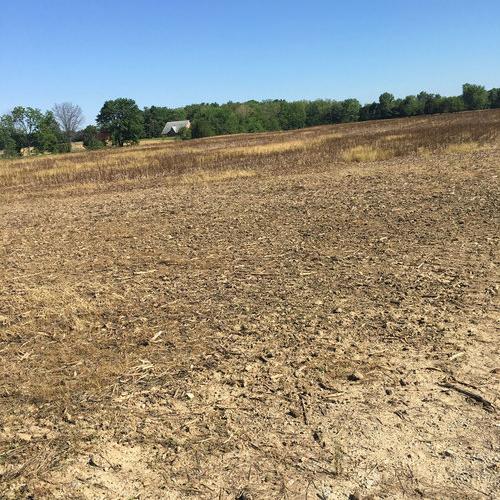As a physician, I was trained in the detection and treatment of disease.
 While the USA boasts of providing the best health care in the world, our populous suffers from an epidemic of obesity, diabetes, and other chronic illnesses that are related primarily to diet and lifestyle1. To address this problem, we must change our focus from treatment to prevention of disease with good nutrition being the cornerstone. We need to emphasize whole foods as opposed to the highly processed, high calorie, hyperpalatable foods that are often deficient in nutrients and minerals2,3.
While the USA boasts of providing the best health care in the world, our populous suffers from an epidemic of obesity, diabetes, and other chronic illnesses that are related primarily to diet and lifestyle1. To address this problem, we must change our focus from treatment to prevention of disease with good nutrition being the cornerstone. We need to emphasize whole foods as opposed to the highly processed, high calorie, hyperpalatable foods that are often deficient in nutrients and minerals2,3.
As a farmer, I have developed a more holistic view of health and nutrition that includes the environmental impact of our food production. Soil is the foundation of health. Healthy, nutrient-dense food comes from healthy biologically alive soil. Our soils have become degraded through the lack of biological diversity, high levels of chemical inputs, and bare fallows. Our current agriculture is extractive and unsustainable. Regenerative Agriculture is a way to grow our foods that mimic Nature. It is a system that produces healthy, nutrient-dense food while continuously building topsoil. It helps restore our broken carbon and water cycles.
As a first-generation farmer, my goal was to farm regeneratively. The farm I purchased was in conventional crop production of corn and soybeans with its associated tillage, chemicals, and bare winter fallows.
The 5 Tenets of Regenerative Agriculture are:
1) Keep the soil covered
2) Minimal soil disturbance i.e., no-tillage
3) Increase biodiversity
4) Keep living roots in the soil year around
5) Incorporate livestock.
I started out by planting the entire farm into perennial grasslands. I repaired a large erosion gully by building a dam to create a small farm pond. What followed demonstrated the richness and generosity of Nature. This pond is now lined with willows, cattails, and beautiful American Lotus water lilies. It is home to hundreds of fish, insects, amphibians, and reptiles. An explosion of biodiversity. Mother Nature knows what to do, she just needs us to get our boot off of her neck.
Now that the farm was in grassland, I introduced cattle as a way to build soil organic matter, recycle nutrients, and produce high-quality beef. Healthy soil is a living organism with billions of microbes in a single teaspoon. In order not to harm the soil biology, we have avoided using any harmful chemicals such as antibiotics, hormones, pesticides, or herbicides. With short periods of grazing followed by long periods of rest, the biodiversity of plants in the pasture has increased as the latent seed bank is awakened. The soil organic matter has increased from 1.5% to 4%, cycling carbon dioxide out of the atmosphere and sequestering it in the soil. This has resulted in improved soil structure with better water infiltration and water holding capacity. We can now hold an additional 50,000 gallons of water per acre. Not only does this allow us to grow more biomass, but it also helps protect the watershed from erosion, runoff, leaching, flooding, and drought. The restored groundwater provides our cattle with clean water year around from natural springs.
The Way Nature Intended:
We are able to produce our 100% grass-fed beef using only grass, sunshine, and water—the way Nature intended. Testing done at Michigan State University confirms the high mineral, vitamin, and omega-3 fatty acid content of our beef4. We direct market our beef locally, providing a healthy product while improving the land. Nature has responded to the care that we have given to the land with another gift in the form of birds. We now have hundreds of swallows that follow the cattle herd providing natural fly control. Red-tailed hawks, American kestrels, Northern Harriers, and Short-eared owls patrol the pastures and hayfields. The presence of birds of prey is an indication of a healthy ecosystem with a well-functioning food web.
A holistic definition of health includes the health of the planet as well as all of its inhabitants. They cannot be separated. As we strive to improve our health through better nutrition, we must remember that healthy soil is the foundation for healthy food as well as ecosystem function. Optimal health only occurs when the whole ecosystem is healthy.
Citations:
1. Wang, Youfa et al. “Will all Americans become overweight or obese? estimating the progression and cost of the US obesity epidemic.” Obesity (Silver Spring, Md.) vol. 16,10 (2008): 2323-30. doi:10.1038/oby.2008.351
2. Poti JM, Braga B, Qin B. Ultra-processed Food Intake and Obesity: What Really Matters for Health-Processing or Nutrient Content? Curr Obes Rep. 2017 Dec;6(4):420-431. doi: 10.1007/s13679-017-0285-4. PMID: 29071481; PMCID: PMC5787353.
3. Mozaffarian, Dariush et al. “Changes in diet and lifestyle and long-term weight gain in women and men.” The New England journal of medicine vol. 364,25 (2011): 2392-404. doi:10.1056/NEJMoa1014296
4. Bronkema, Sara & Rowntree, Jason & Jain, Raghav & Schweihofer, Jeannine & Bitler, Chad & Fenton, Jenifer. (2019). A Nutritional Survey of Commercially Available Grass-Finished Beef. Meat and Muscle Biology. 3. 116. 10.22175/mmb2018.10.0034.








